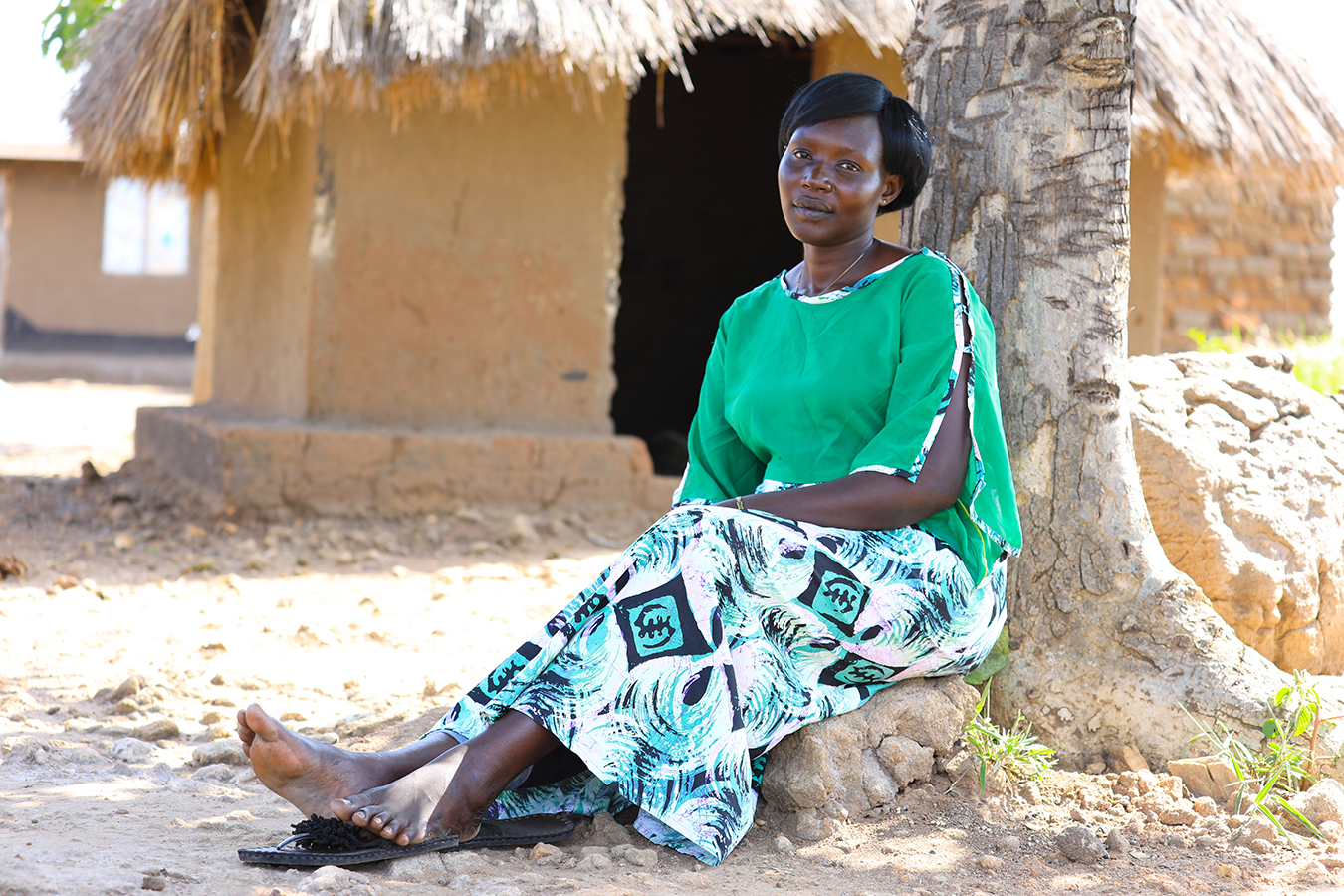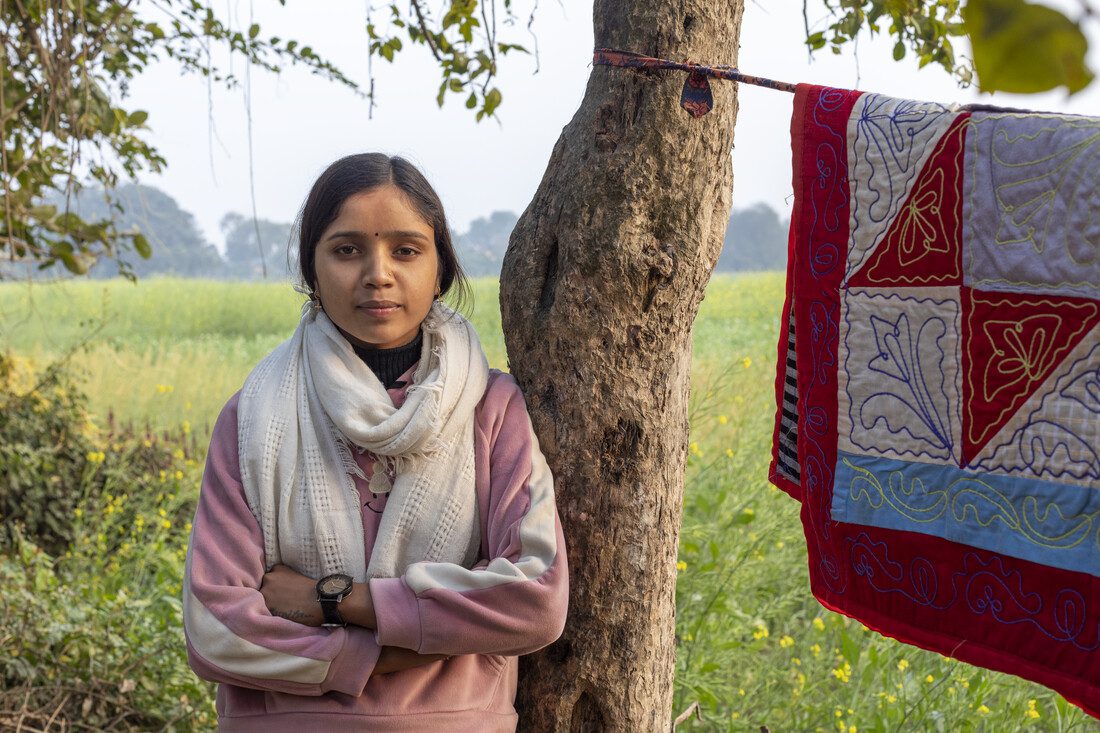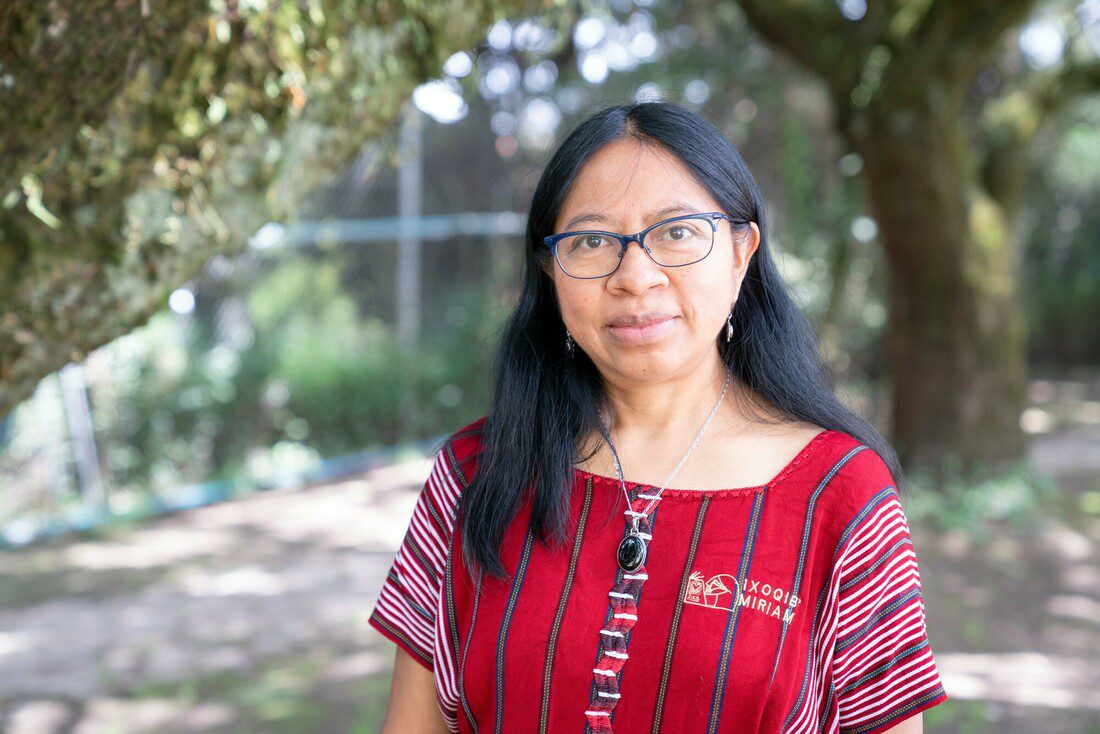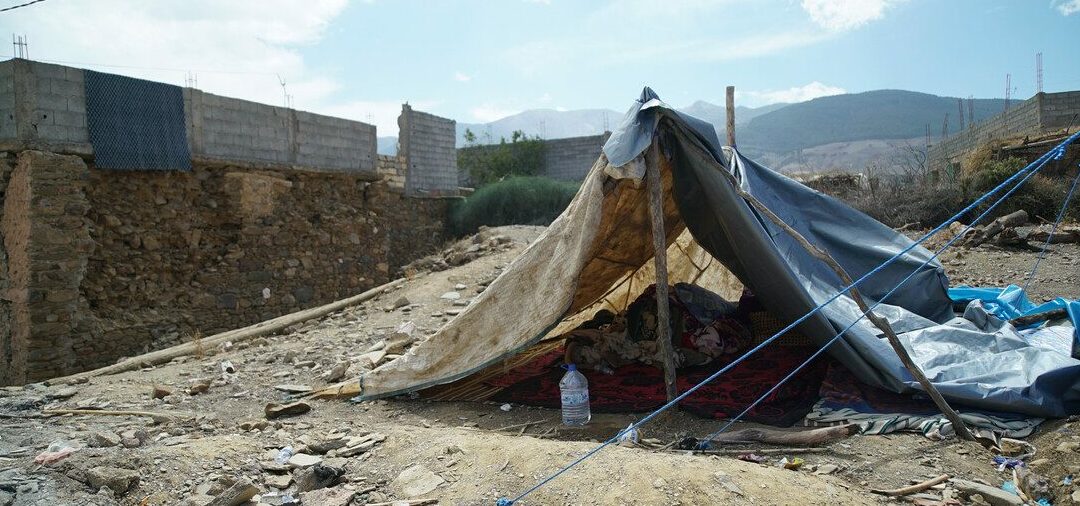CARE’s vision of a world of hope, inclusion, and social justice has a clear focus. We put women and girls at the centre of everything we do because we know we can’t overcome poverty until everyone has equal rights and opportunities.
Sounds great, but it needs specifics. So let’s talk about those.
We don’t just mean including more women and girls.
We need to address the root causes of poverty and inequality—the underlying reasons why women are unable to show up, have their voices heard, or influence the changes they need so they can build a better future—not just for themselves but for their families, communities and the world.
We know that addressing the root causes of gender inequality is complex. We also know that it’s possible.


Halatu lives in a refugee settlement in Uganda. She mobilized her community, persuading authorities to move food distribution sites closer to the community so women didn’t have to risk trekking six miles to access food. Ekinu Robert/CARE
Since 2015, CARE has supported 16.5 million women and girls to increase their sense of empowerment and improve gender equality.
This means more girls and women are speaking out about the issues that affect them, making decisions about their bodies, homes and families as equals with their partner, working together for change in their communities, accessing services that meet their needs, and so much more.
To create these kinds of changes for all the women and girls we work with across more than 100 countries, we have to put gender equality at the centre of everything we do. Here are four ways we’re doing this:
Women and girls set the priorities
It might seem obvious, but one of the simplest ways to prioritize the needs of women and girls is to ask them what they want.
We listen to women’s experiences through initiatives such as Women Respond, which helps us understand the challenges women face and ensures CARE as an organization is heading in the right direction.
For example, our March 2023 Her Voice report highlighted how crises, including conflict and climate change, are intensifying insecurity and gender-based violence.
In all our programs, including in emergencies, we’re placing a greater emphasis on understanding the specific risks women and girls face and taking steps to improve their safety.
We’re also supporting women and girls to choose how they want to make those changes. For girls like Sunita in Nepal, this meant talking to others her age about what mattered to them and approaching local government to make changes.
“We started with a small community of girls in our village, but this didn’t seem sufficient to tackle the challenges we faced so we brought many communities together and formed Girls’ Rights Forums at three different levels,” Sunita says.


Nineteen-year-old Sunita from Nepal joined CARE’s Tipping Point initiative from 2018-2022. She works to address the challenges teenage girls face. Laura Noel/CARE
Gender isn’t in a silo
Gender equality isn’t something we can promote separately from everything else. Women don’t stop being women simply because they’re also a farmer, or an employee, or someone who has had to leave their home because of a disaster.
That’s why we put gender at the centre of all our projects regardless of what these projects focus on.
Nearly 75 per cent of our projects that completed research or evaluations in 2022 were able to report at least one change related to gender equality, such as women speaking out and negotiating more, or couples making decisions as equals in their homes.
Centering women and girls doesn’t mean that we exclude men and boys, on the contrary. Our work is most successful when boys and men are fully engaged and become champions for equality. Men and women who belong to more equitable societies are, on average, healthier, more financially secure and better educated.
This is possible across all projects, including in emergencies. And the benefit goes far beyond women.
We’ve seen examples of groups who were not previously reached by emergency responses gaining access to services and support as a result of women’s advocacy and leadership. We’ve seen families’ income increase, farmers grow more food and crops increase in value.


CARE works with women like Elizabeth in Guatemala, who leads action for the rights of indigenous women. Ana Maria Buitron/CARE
More than just projects
We know how to integrate gender into our projects, but putting gender at the centre of all we do also means looking at our people, policies and processes.
Why is this important? If staff don’t live CARE’s values when working within communities or engaging with other organizations, it undermines what we’re trying to achieve. If our teams aren’t required to measure whether they’re addressing the root causes of gender inequality, this may not remain at the top of their priority list.
We’ve been looking at this across entire country teams and it’s working. Across three countries which engaged deeply on this in the past year—Yemen, Northwest Syria and Sudan—they were able to double the number of people reached by projects which were actively challenging harmful gender norms.
It’s not about us
Putting gender equality at the centre means prioritizing those who are leading change their own way.
We’ve already written about what we’re doing to be a better partner, and our aim to raise the voices of women around the world working for change.
In our programs, we’re shifting how we work with women’s rights organizations and women-led movements. This means working with amazing partners like SUPERBO in Kenya, a feminist women’s rights organization led by young women based in the informal settlement of Kibera in Nairobi. Through our projects, we are supporting local partners to strengthen their operations, deepen their expertise and build collective action between organizations, while providing funding tailored to their needs.




